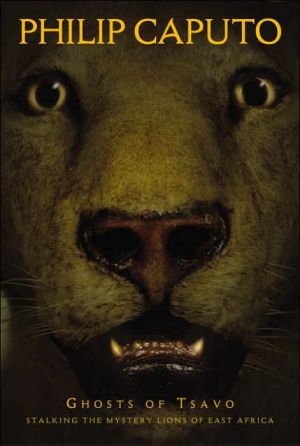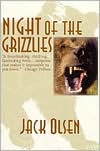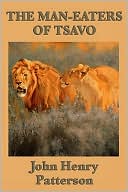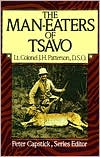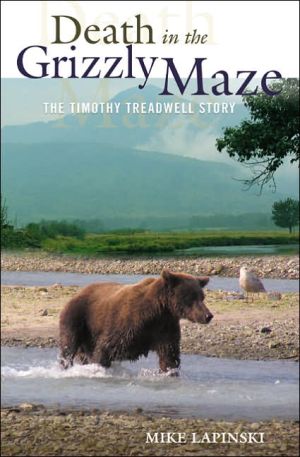Ghost of Tsavo
1898, Tsavo River Kenya, the British Empire has employed 140 workers to build a railroad bridge. The bridge's construction comes to a violent halt when two maneless lions devour all 140 workers in a savage feeding frenzy that would make headlines›and history—all over the world. Caputo's Ghosts of Tsavo is a new quest for truth about the origins of these near-mythical animals and how they became predators of human flesh.
Search in google:
1898, Tsavo River Kenya, the British Empire has employed 140 workers to build a railroad bridge. The bridge's construction comes to a violent halt when two maneless lions devour all 140 workers in a savage feeding frenzy that would make headlines›and history—all over the world. Caputo's Ghosts of Tsavo is a new quest for truth about the origins of these near-mythical animals and how they became predators of human flesh. Book Magazine In 1898 a pair of large, maneless male lions killed and ate 135 workers hired by the British to build a bridge over the Tsavo River in what is now Kenya. Some scientists think these two cats (now stuffed and mounted in Chicago's Field Museum of Natural History) belonged to a different breed of lion—a missing link to the big cats that once feasted on our prehistoric ancestors. Throughout East Africa, maneless lions' reputation for man-eating is notorious, and Caputo's at-times riveting book opens with several blood-chilling accounts that make these animals seem more like feline Hannibal Lecters than the lazy cats familiar from nature specials. The Pulitzer Prize-winning journalist ventures into the field with several scientists, some bent on debunking the notion that Africa is home to an elusive, homicidal living fossil. Although his narrative is inconclusive—the riddle of the maneless lions remains unsolved—Caputo manages to stir the embers of our primal fears.
\ From Barnes & NobleIn March 1898, two maneless male lions began preying on East African workers building a railroad bridge over Kenya's Tsavo River. Perhaps first attracted by the unburied dead, this fierce pair of predators feasted on the largely defenseless laborers, killing and eating perhaps as many as 140 workers in the next nine months before a squad of imported sharpshooters caught up with them. Now bestselling Pulitzer Prize winner and National Book Award finalist Philip Caputo provides an original narrative that presents this incident in fresh light. Bristling with visceral detail and scientific insight, Ghosts of Tsavo stands as the best account yet of a harrowing episode.\ \ \ \ \ Eric WargoIn 1898 a pair of large, maneless male lions killed and ate 135 workers hired by the British to build a bridge over the Tsavo River in what is now Kenya. Some scientists think these two cats (now stuffed and mounted in Chicago's Field Museum of Natural History) belonged to a different breed of lion—a missing link to the big cats that once feasted on our prehistoric ancestors. Throughout East Africa, maneless lions' reputation for man-eating is notorious, and Caputo's at-times riveting book opens with several blood-chilling accounts that make these animals seem more like feline Hannibal Lecters than the lazy cats familiar from nature specials. The Pulitzer Prize-winning journalist ventures into the field with several scientists, some bent on debunking the notion that Africa is home to an elusive, homicidal living fossil. Although his narrative is inconclusive—the riddle of the maneless lions remains unsolved—Caputo manages to stir the embers of our primal fears.\ \ \ Publishers WeeklyIn a reasoned, researched account, Caputo (A Rumor of War; Horn of Africa; etc.) lays out the myths and scientific evidence surrounding a variety of maneless male lions in East Africa that prey on human beings. Two such lions gained infamy in 1898 when they devoured well over 100 Indian and African workers enlisted by the British to help construct a bridge over the Tsavo River (the 1996 movie The Ghost and the Darkness was based on the same subject). The book's most remarkable asset is that, given the alluring subject matter, Caputo keeps things on an even keel. That doesn't mean, though, that the writing doesn't bring home the real terror of considering a complex human being, with a unique identity, with hopes, ambitions, and desires just like yours, reduced by a creature with a brain slightly larger than your fist to nothing more than a few fragments of bone and a bloodstain on the grass. Caputo travels with two different sets of scientists on either side of a theoretic divide: is the lack of manes on these males to be explained by environmental pressures, or are they genetically distinct from the lions in the rest of Africa? The latter would be a stunning development as there are currently only two recognized species of lion in the world. Caputo doesn't aim to solve the mystery here. Rather, he methodically provides the arguments on both side while taking readers on a virtual safari as he observes the scientists at their work. The result is an engrossing book that mixes high-quality travel writing with an intriguing mystery and an in-depth look at the scientific process that tries to grapple with it. (June) Copyright 2002 Cahners Business Information.\ \ \ \ \ Library JournalIn 1898, two maneless male lions killed and devoured 135 Indian and African workers constructing a railroad bridge over the Tsavo River in Kenya. It took Lt. Col. John Henry Patterson, the engineer in charge of the project, nine months to hunt and kill the beasts, an ordeal recounted in his 1907 book, The Man-Eaters of Tsavo, and later the subject of two films, 1952's Bwana Devil and 1996's The Ghost and the Darkness. A century later, the story of Ghost and Darkness still fascinates and terrifies. Were they just rogue lions, or were they the "missing genetic link" between the prehistoric cave cats who hunted early humans and the modern African lion? Novelist Caputo (The Voyage) seeks answers to this intriguing question as he accompanies two separate expeditions to study the maneless lions of Tsavo. Unfortunately, the resulting book is a frustrating mix of personal travel narrative and scientific speculation, with no definite conclusions. Admitting his ambivalence, Caputo writes: "I feel divided, half of me hungry for scientific truth, the other half seeking to embrace the mythic. It occurs to me that I haven't come close to solving the mystery of Tsavo's lions, probably because my heart hasn't been in it." Still, Caputo's muscular prose vividly captures the beauty and dangers of Africa, and there will be demand because of his name. For larger adventure and natural history collections. Wilda Williams, "Library Journal" Copyright 2002 Cahners Business Information.\ \
